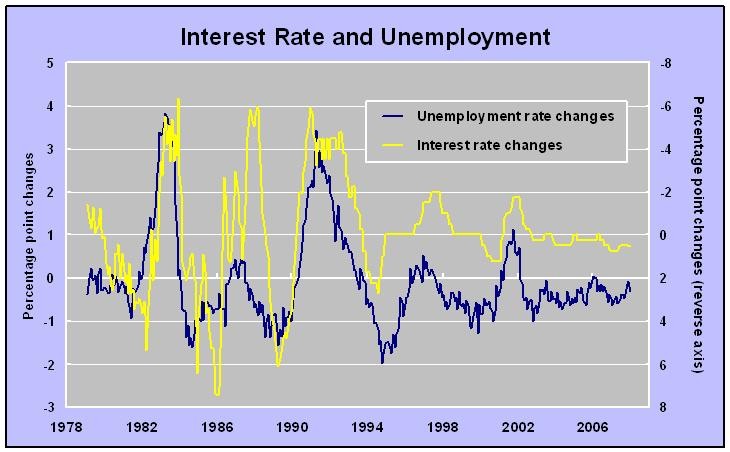How to Prepare for Falling Interest Rates
Post on: 3 Июнь, 2015 No Comment

Take Advantage of Low Interest Rates
Interest rates play an important role in not only the economy, but in your personal finances as well. The Federal Reserve regularly monitors economic conditions and has the ability to raise or lower key interest rates that trickle down and affect everything right down to your savings account. As rates begin to fall, what does this mean for you, and how can you plan for lower rates?
Understanding Why Interest Rates Fluctuate
Planning for interest rate changes requires that you understand why the Federal Reserve makes these decisions in the first place. The Federal funds rate is the interest rate in which banks charge each other for loans on their excess reserves.
Without going into too much detail, the Fed uses interest rates influence the economy. Interest rates increase in an effort to make borrowing money less-attractive and slow a rapidly growing economy. This is done because excessive growth and business expansion can lead to increased inflation. On the other hand, when the economy weakens, the Fed may decide lower interest rates. Lowering the rate will make money flow more freely and hopefully stimulate economic growth.
Lower Interest Rates are a Mixed Blessing
As a consumer, you love to see lower interest rates when borrowing money. Whether it is the rate on your credit card, mortgage, auto loan, or any other type of loan, you generally enjoy these lower rates. While lower rates can certainly be a blessing for your debt, not everything is rosy.
As mentioned above, a trend of decreasing rates is likely in response to a weakening economy. This means that other investments such as stocks or real estate have probably not been faring very well in recent months or years. In addition, lower interest rates also affect things like your savings account. So while you may be paying less to borrow money, you’re also being paid less to lend or deposit money.
Tackle Your High-Interest Debt
When interest rates begin to decline, one of the first places to take advantage is with your high-interest credit cards. Keep in mind that when the Fed cuts the rate, it can take quite a few months or even years to trickle down to all aspects of your finances. But by planning ahead for this trend, you can position yourself to save money on your credit card payments.
As rates decrease, you may or may not notice your current credit card rate decrease automatically. Many times you may have to actually call the credit card company and see if you can receive a lower rate. If you have relatively good credit and an excellent payment history with the company, this often works regardless of interest rate trends.
If your current credit card company isn’t willing to budge on rates, you should begin looking at other card offers available. You may be able to find another card with rates a point or two lower than what you’re currently paying, or even possibly find a 0% incentive for six months. It may not seem like much to save just one or two percentage points, but remember that on larger balances that will take a few years to pay off, this could mean hundreds of even thousands of dollars in savings.
Good News for Homeowners and Buyers
For those who are looking to buy a home, decreasing rates is certainly a good thing. While mortgage rates aren’t directly linked to the Federal funds rate, they do generally follow over time. Of course, lower mortgage rates mean you can get into the house you want while saving money on interest. One thing to be careful of is that you don’t increase your budget to simply get into a bigger house than you need. Just because lower rates mean lower payments, you should use this as an opportunity to save money, not as an excuse to buy more home than you need.
If you already own a home and purchased it when the rates were a bit higher, this could be an opportunity to refinance. Even being able to shave a point off of your mortgage rate could mean freeing up an extra couple hundred dollars a month. If you do decide to refinance, make sure you compare the savings with the potential fees and expenses associated with the refinance to make sure it is actually going to save you money.
Don’t Forget Your Savings
Clearly, low interest rates are great for borrowing money, but when it comes to trying to earn money on your savings, it isn’t to your advantage. When it comes to savings accounts, certificates of deposit, and bonds. they typically feel the effects of an interest rate cut much faster than credit cards and loans.
If your savings account rate is dropping, you should be on the lookout for higher paying alternatives. Instead of a true savings account, your bank or credit union may offer a higher yielding money market instead. If your local bank isn’t keeping up with rates, you can also look online at many of the online savings institutions which generally have better rates than retail banks.
One benefit of CDs is that they are time deposits, which means your rate is locked in for a specified amount of time. If the general consensus is that rates are going to continue to drop for the coming months or even years, you can plan ahead and stash money in a CD. While rates are continuing to drop, your money in the CD will continue to earn the same rate it started with. Just be careful that you put money into a CD that you won’t need immediately since there is usually a penalty for taking the money out before it matures.














